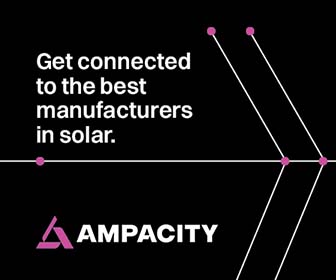New Berkeley Lab Report on Solar-Adopter Income Trends
A new report by Lawrence Berkeley National Laboratory highlights income trends among residential rooftop solar adopters.
The study is based on address-specific income estimates and other financial metrics for roughly 1.4 million residential rooftop solar adopters across the country, representing the most extensive analysis of this topic to-date. The study describes the income distribution of solar adopters over time and across states and other geographic scales. Though the study posits some broad hypotheses for the observed trends, it aims primarily to serve as a foundational resource for market participants and other researchers who seek to explore these topics in further depth.
Key findings from the study include the following:
Solar adopters span all income ranges, including low-to-moderate (LMI) households. As shown in the figure to the right, 15% of 2018 solar adopters have household incomes <$50k, 33% are between $50-100k, 24% are between $100-150k, and the remaining 28% are ≥$150k. Using one common definition of LMI, 15% of 2018 adopters are below 80% of their respective Area Median Income (AMI), while 30% are below 120% of AMI.

Solar-adopter incomes skew high relative to the broader population, though less so when compared to just owner-occupied households (OO-HHs), and also less so when compared to other households in the same local area (e.g., county or census tract). For example, 18% of 2018 solar adopters have incomes below the national median for all households, while 30% are below the national median for OO-HHs, and 38% are below the median income for OO-HHs in the same census tract.
The degree of disparity varies significantly across states and local markets. Among individual states, typically anywhere from 25-50% of 2018 solar adopters have incomes below the state median for OO-HHs, and a similar range applies across most counties as well. A total of 3 states and 42 counties in the dataset exhibit "income parity", where at least half of all 2018 solar adopters have incomes below the corresponding median for OO-HHs.
 Solar adoption has been gradually migrating toward lower income ranges over time, reflecting both a broadening and a deepening of U.S. solar markets. For example, households with incomes <$100k grew from 39% of solar adopters in 2010 to 48% in 2018, while those with incomes ≥$200k dropped from 26% to 16%. Similar trends are evident within most individual states and counties as well.
Solar adoption has been gradually migrating toward lower income ranges over time, reflecting both a broadening and a deepening of U.S. solar markets. For example, households with incomes <$100k grew from 39% of solar adopters in 2010 to 48% in 2018, while those with incomes ≥$200k dropped from 26% to 16%. Similar trends are evident within most individual states and counties as well.
Solar adopters also skew high in terms of home value and credit score, relative to the broader population. Among all 2018 solar adopters, 27% have home values below their respective county median, while 35% have credit scores below the median. As with the income trends, however, these numbers have been rising over time as adoption rates increase among households with below-median home values and credit scores.
The report, published in slide-deck form along with an accompanying set of online data visualizations, is available at https://solardemographics.lbl.gov.
The authors will also host a webinar highlighting key findings from this study on March 10, 2020 at 11:00 AM Pacific/2:00 PM Eastern. Register for the webinar here: https://lbnl.zoom.us/webinar/register/WN_WocYzU-BR8S4UaK1XYMuHg
LBL | emp.lbl.gov











.png?r=4939)
